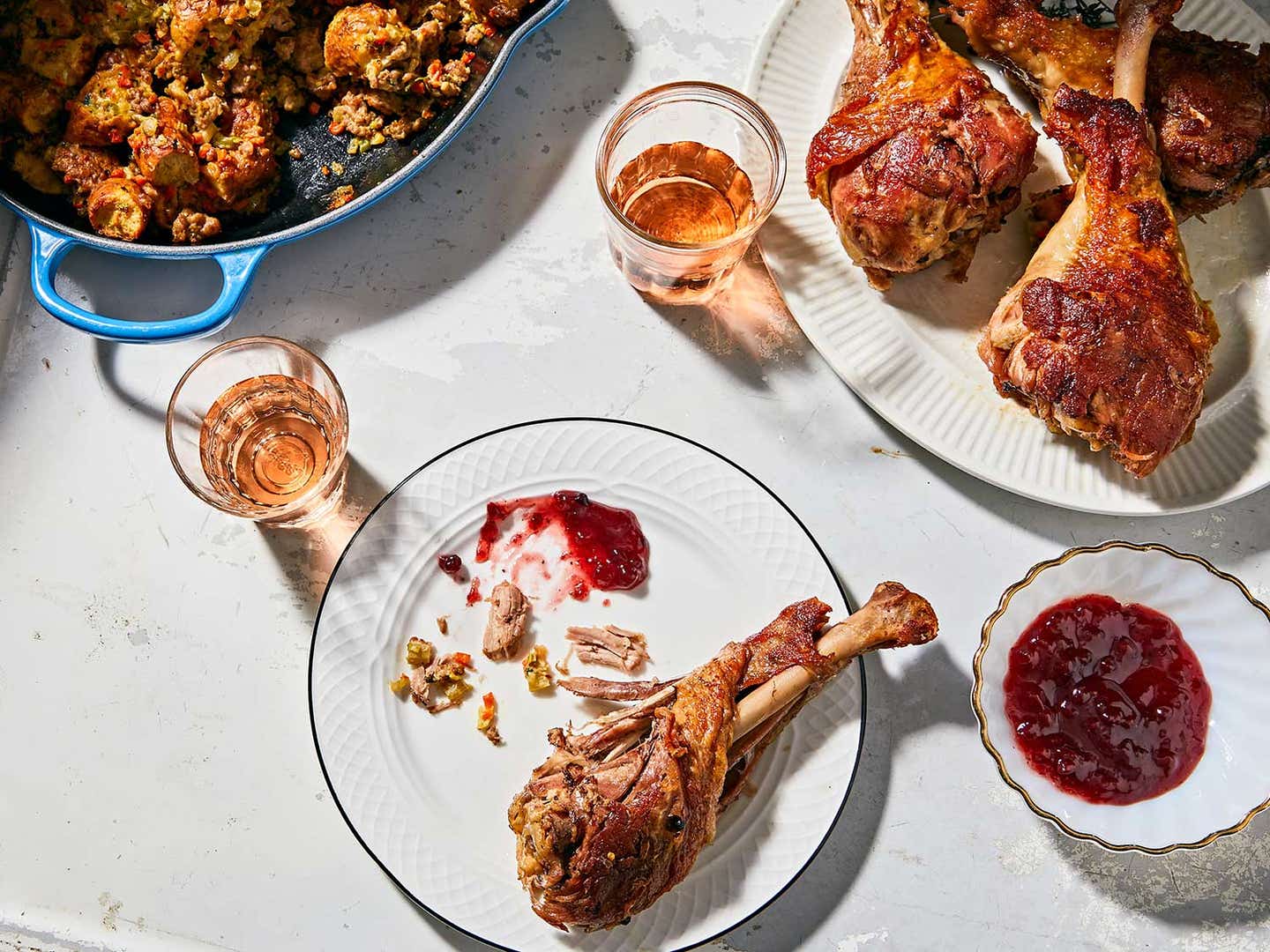
Hot Legs: Now’s The Perfect Time To Make Turkey Confit
The holidays may be over, but now is the perfect time to make this elegant winter fare
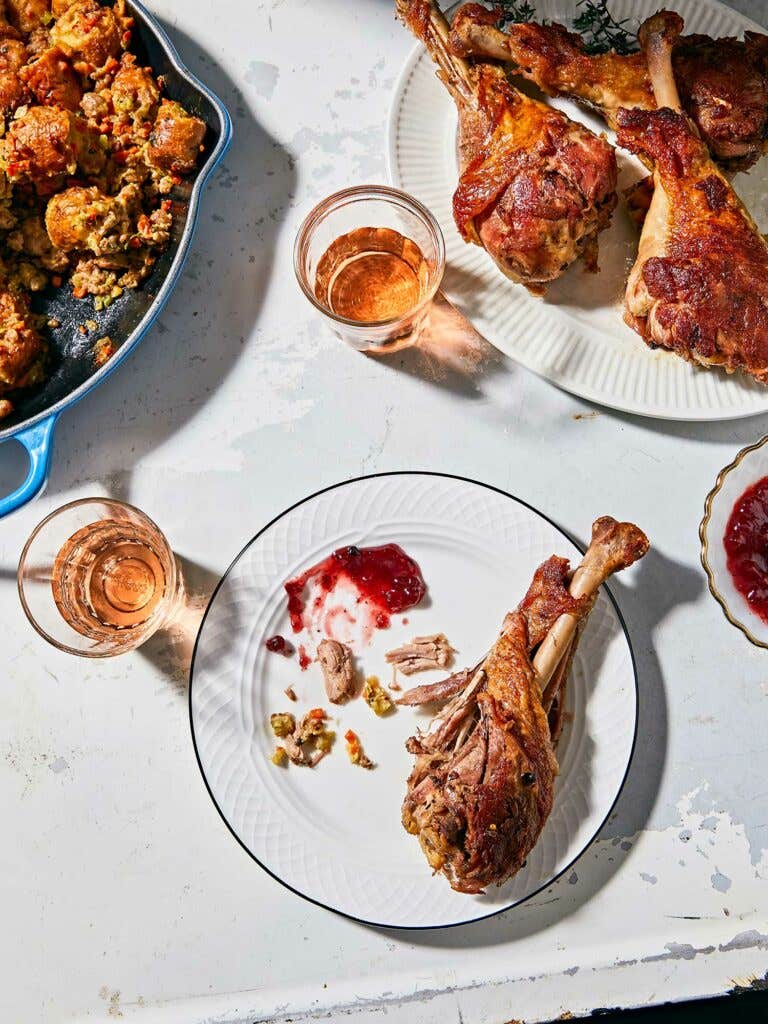
The holidays mean turkey – roasted whole, for the Norman Rockwell-style reveal at the table, then the inevitable follow-up acts of tetrazzini, tacos, or soup. Weeks after the bird’s big moment is over, however, frozen turkeys remain plentiful at the store, often at a discount. Yet, who wants to go another round of creative repurposing?
At Funkenheusen, a German-style beer hall in Chicago where they prepare around 15 different kinds of cured meats every week, chef and owner Mark Steuer admits to preferring a different approach to the traditional winter feast. Steuer has been curing meats for nearly a decade. Though his father’s Bavarian roots were the inspiration for his restaurant, this chef is also influenced by his Charleston, South Carolina upbringing, and the menu at Funkenhausen reflects both backgrounds. (You can go in the schnitzel and sauerkraut direction, or opt for oysters and smoked rib tips.)
“A confit of the legs and thighs, which leaves the meat very rich and flavorful, is my favorite way to eat turkey,” Steuer says, adding that he roasts the breast separately for white meat that is never overcooked.
Technically charcuterie, confit is water fowl, poultry, or meat cooked in fat (typically its own), at a low temperature over several hours, then sealed in the fat for curing and prolonged storage. Unlike frying, where the high heat of the oil quickly expels juices to crisp the surface, the more moderate temperature keeps the moisture in.
One of the earliest means of preserving meat, confit is the culinary calling card of southwestern France. Cassoulet, made with white beans and duck, and garbure, a stew of vegetables and duck or goose, both feature meat prepared in this manner. The word confit comes from the French confire (“to preserve”), and in times before refrigeration, the ducks, geese, and other waterfowl plentiful in the region were cooked this way, sealed in fat to keep bacteria out, then stored in an earthenware pot in a cool cellar. As the meat cures in the fat, the protein tenderizes further, allowing it to improve with time. Tougher cuts (turkey legs, for example) are ideal for confit, elevating would-be leftovers to elegant cold-weather fare.
Steuer serves his turkey leg confit alongside a hearty pretzel stuffing—an innovation this chef confesses was the result of quick thinking while hosting a large holiday gathering last year at the restaurant. “At the time, we were making around 1400 pretzels in-house every week. I’d planned to have a classic sourdough and sausage stuffing—your basic grandma recipe,” he recalls. “I forgot to order the bread.”
Ready to confit at home? Here’s how Steuer does it:
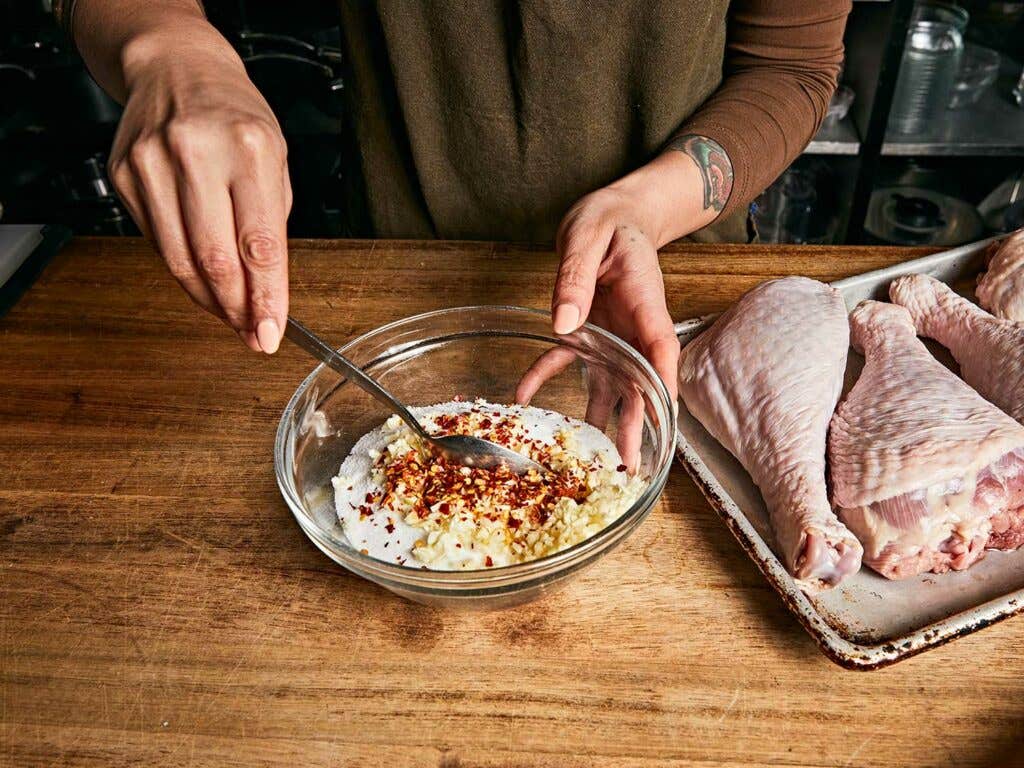
First, prepare a dry brine of salt, sugar, chile flakes, and minced garlic. Dry brining imparts seasoning and kicks off the curing process, removing moisture and breaking down the muscle as the meat absorbs the salt. (Though sugar does aid in this process, its addition is mostly for flavor.) Steur starts all of his charcuterie recipes at Funkenheusen with this basic cure, adding a variety of different aromatics depending on what he is preparing.
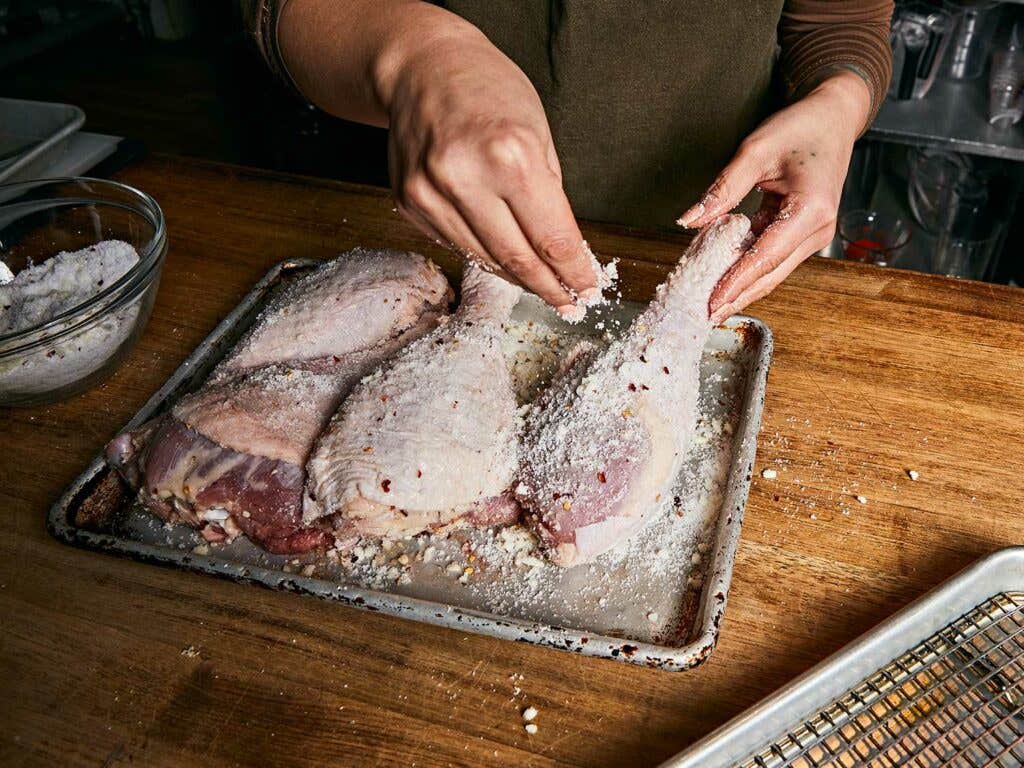
Set a cooling rack in a shallow roasting pan or large rimmed baking sheet and set aside. Rub the brine mixture all over the drumsticks, pressing to adhere it to the meat. (Though it seems like a lot of brine, pack it all on; most will be rinsed off before cooking.) Transfer the turkey to the rack, refrigerate, and leave the drumsticks to cure, uncovered, for at least six and up to 12 hours.
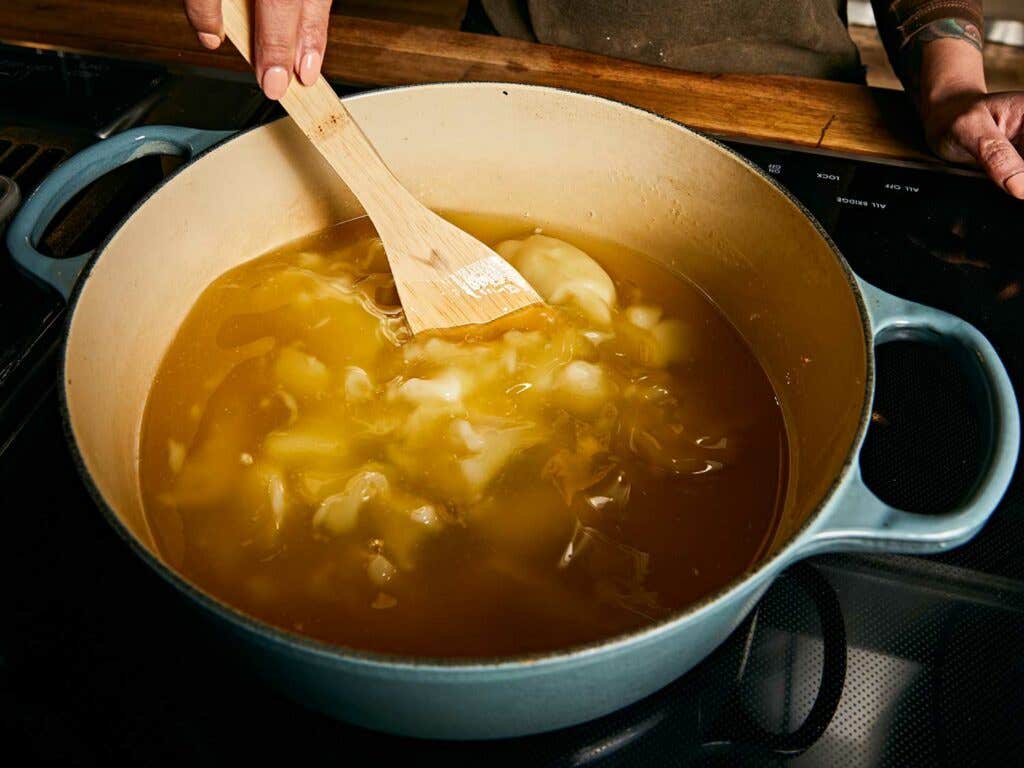
In a medium Dutch oven over medium-low heat, melt the duck fat, then add the aromatics. Steur leaves the garlic and herbs whole, straining them off and then reusing the fat two or three times, as it picks up a lot of flavor during the cooking process. Another reason to re-use it: Duck fat is expensive. His local source is Gunthorp Farms, a family-owned operation in nearby LaGrange, Indiana. (Their products are available in some Chicago markets.) By mail, D’Artagnan sells 7-ounce tubs for $8 or bulk 10-pound pails for $80. The duck fat may be stored in the freezer for up to six months.
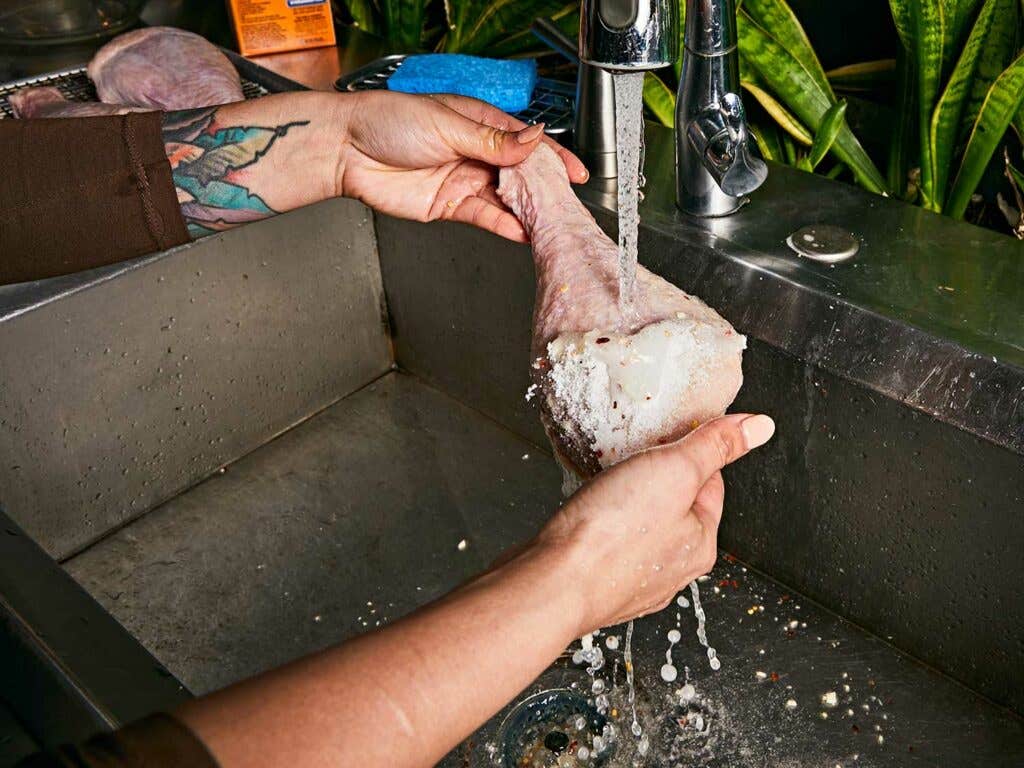
Meanwhile, take the drumsticks out of the refrigerator and rinse them well under cold running water to remove the brine. Pat them dry with paper towels. (Expect to see some liquid in the bottom of the sheet pan; this is a by-product of the brining process.)
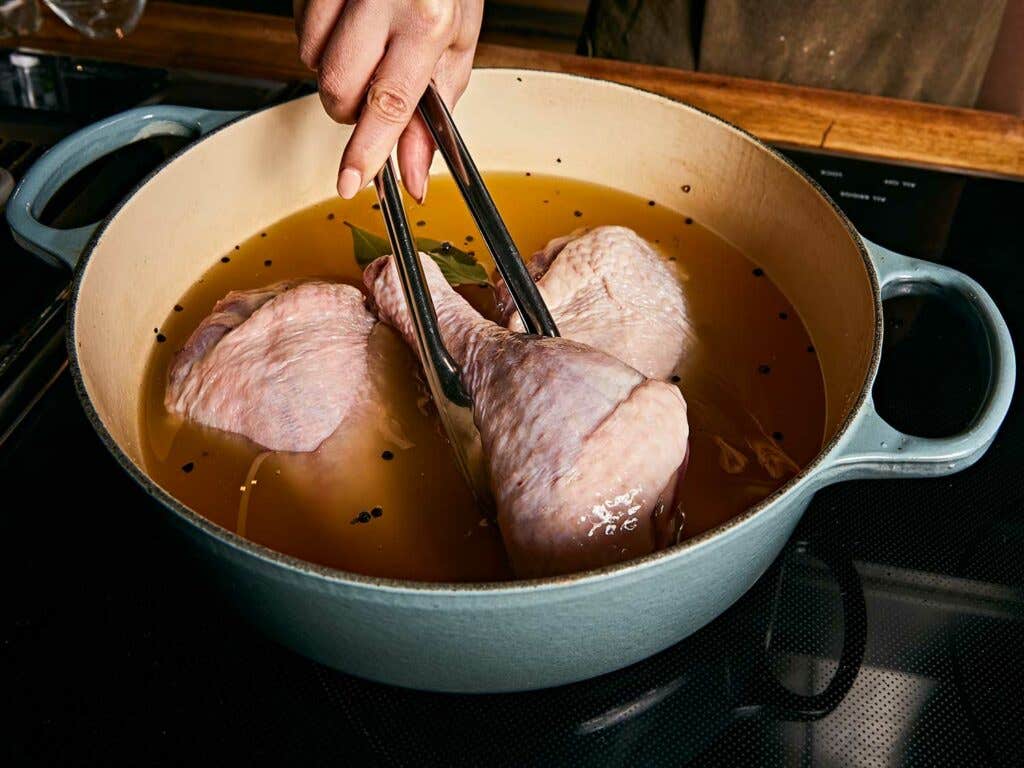
Once the fat is warm and fully melted, completely submerge the turkey legs, cover the pot, and transfer to a preheated 275° F oven. Cook, undisturbed, until the meat is very tender and pulls apart easily with a fork, about three hours. Though this process may also be done on the stovetop, it is much harder to maintain a consistent temperature. Only opt for this if you have a candy thermometer handy and are willing to keep a close eye on it. In his restaurant, Steur cooks larger batches of confit in a deep hotel pan, covering it tightly with foil before putting it in the oven.
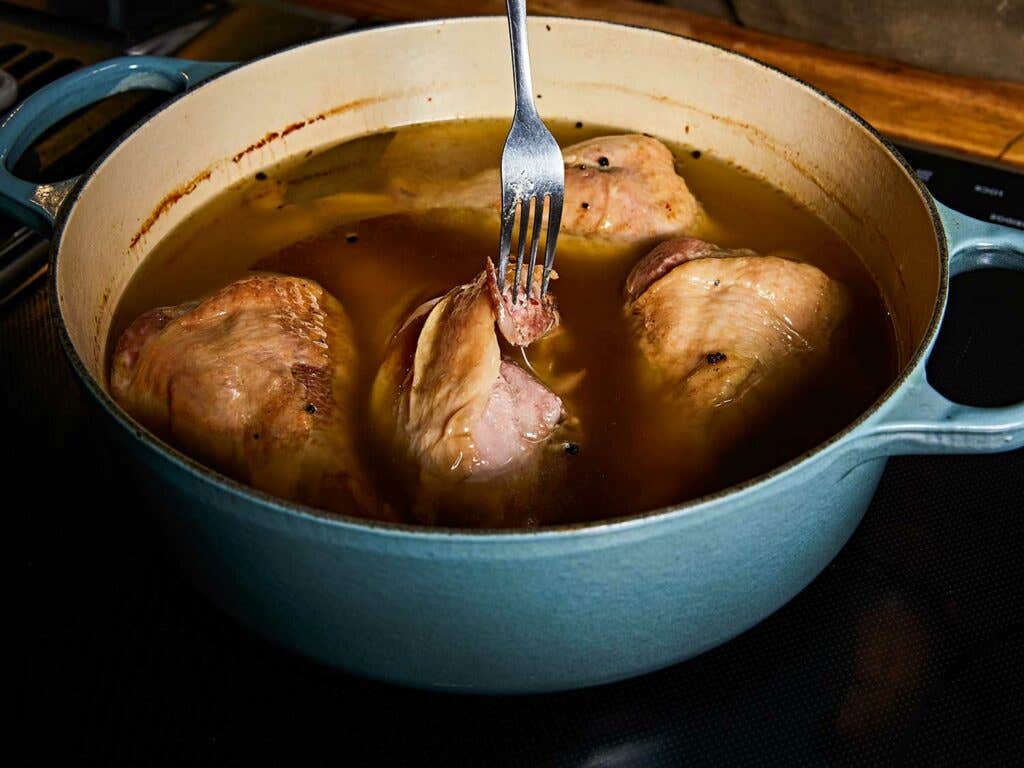
Allow the duck to cool to room temperature in the cooking fat. At this point, you may transfer the drumsticks and fat to a smaller, sealable container. Check to be sure drumsticks are completely submerged and there are no air pockets, as sealing the meat in the fat inhibits the growth of bacteria. Refrigerate for at least six hours and up to two months.
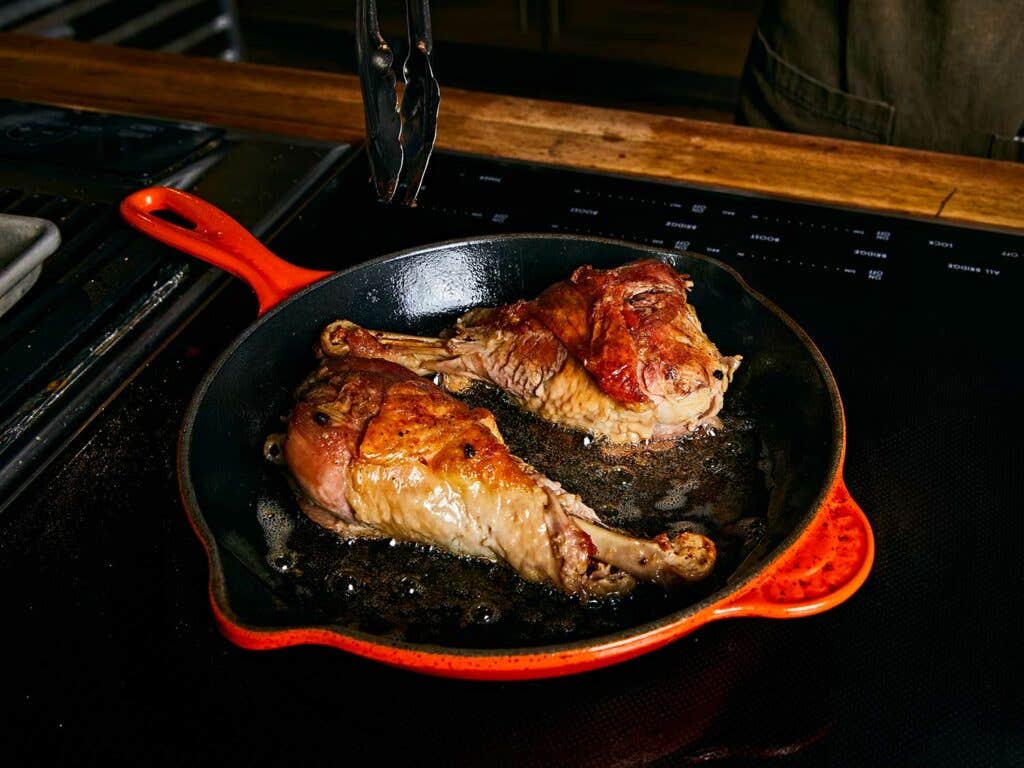
To finish the dish, return the Dutch oven to the stove over low heat and cook until the drumsticks are heated through. This will allow you to remove them from the fat without shredding the meat. Just before serving, crisp the drumsticks in a hot skillet.

Transfer to a platter and serve with lingonberry preserves (a Steur family favorite) or cranberry sauce. Leftovers? The possibilities are endless, says Steur, but probably best to keep it simple: Shred the meat and pile it onto a baguette with a little mustard.
Keep Reading
Continue to Next Story










